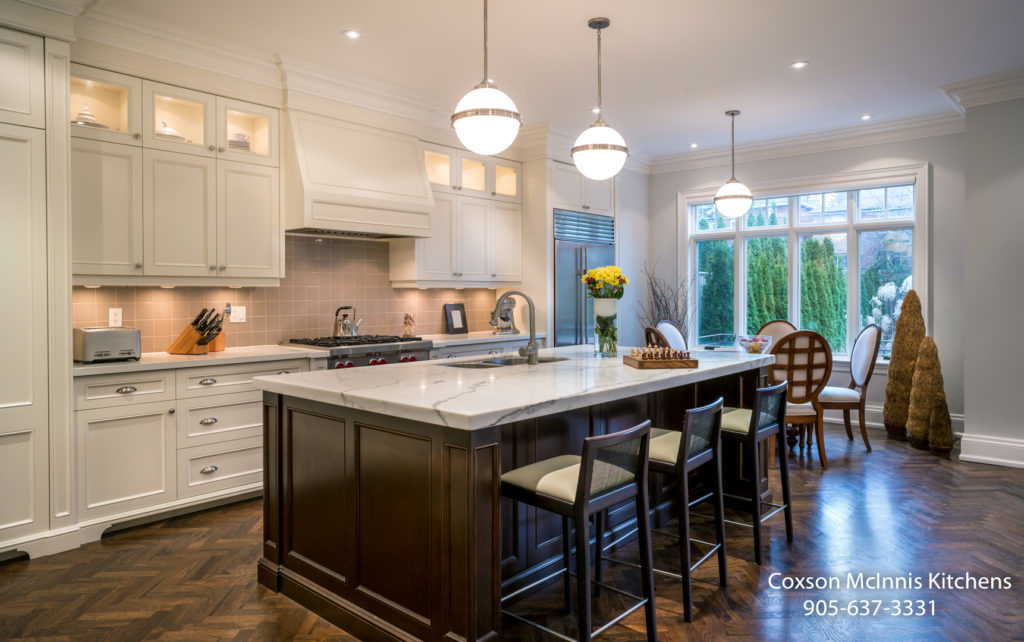Having difficulty turning your dream of a new kitchen into a workable plan? You can get help from an experienced professional and it’s free. Most better quality kitchen companies offer free kitchen design consultation but, to benefit fully, you need to prepare.
The best kitchen renovations are the result of a collaborative process. Our job as designers is to make recommendations but it’s your kitchen, your home and your lifestyle so and we need your help to understand what will work best for you.
3 things you should do before meeting with a kitchen designer:
- Develop a Budget: This is the foundation of any successful renovation.
Every day people call or visit our information and design centre wanting to know what our kitchens cost. The reality is that we design to meet individual client needs, which includes the amount of investment they are comfortable making. So the simple answer is that your new kitchen should not cost more than you are comfortable spending and only you can determine that.
Breaking the budget down into project elements will enable you to begin to investigate options and ultimately help to make better purchase decisions. The following budget example won’t to be exactly right for you but it’s a reasonable guide to get you started.
- Kitchen Cabinets (installed) 55%
- Appliances 18%
- Stone Countertops 12%
- Flooring 5%
- Lighting 4%
- Backsplash 3%
- Sink and faucet 2%
- Hardware 1%

Be sure to factor in HST and you should allow 10% for contingency depending on how extensive your renovation will be. If structural changes, bulkhead or wall removal, relocating plumbing, electrical or HVAC services or new windows are part of your plan you will need to develop a separate budget.
You can easily price appliances and flooring to get an idea of what you can get with a budget this size and the designer can help by advising what’s feasible, in terms cabinetry and overall design options.
The size of the budget doesn’t matter to the designer as long as it’s adequate for what you want to do. Their job isn’t to sell you anything but to make recommendations. Your budget provides the framework for them to understand what would be appropriate.
Be honest with yourself and the designer about your budget. Remember that kitchen renovations involve long-term decisions. If you are not comfortable making the necessary investment at this time, wait until you’re in a better position to move ahead so that you ultimately get the kitchen you want.
- Create a “Wish List” before scheduling your free kitchen design consultation
We all use our kitchen in different ways. For most of us it’s is much more than a place to prepare meals, it’s the social centre of our home. The kitchen is often the only place where busy families get to interact on a daily basis and it plays a central role in entertaining family and friends. A kitchen remodel should be a lifestyle improvement.
Take time to identify the things that you want your new kitchen to do and make a wish list. This will help guide the conversation during an in home design consultation and give the designer a good overview of how you and your family use the space.
For a kitchen to be really good, it’s got to be functional. Don’t worry too much about the design at this time and focus on functional wants and needs to develop your list.
An example wish list:
- Provision for bigger appliances
- Accessible storage for the everyday things now on the countertop (list the items),
- Special food storage needs (e.g. bulk packs or containers)
- More working counter space for specific activities (e.g. baking, homework, working on the computer or reading the paper),
- Garbage or recycling pullout
- Drawers and drawer organizers
- Wine or beverage fridge
- Vertical storage for cooking sheets, cutting boards, serving trays,
- Storage with easy access for small appliances (list the items),
- Replace the table with a sit-at kitchen island or peninsula,
- Take the cabinetry to the ceiling with crown molding, etc.
Think about other daily household activities that take up space in the kitchen like:
- Pet food and pet needs
- Charging station
- Mail, keys, message board
- Filing for household documents (paid bills, warranties, etc.)
- Household hardware (flashlight, batteries, pens, office supplies)
- Cleaning products
- If it’s not practical to accommodate some of these in the kitchen, talk to the designer about alternatives. Like, custom cabinetry in the laundry room or other appropriate space in your home so that they don’t end up back on the counter in your new kitchen.
Encourage family and friends to participate. This is the dream stage so it doesn’t matter how long the list is. At some point the budget will likely require compromises so prioritize the “must haves”, “would be nice to have” and “like to consider” so that the designer understands where to draw the line if necessary.
- Research the Style and the Overall Look you want to achieve
Style is how we experiment with who we are and communicate that image to people that matter. One of the biggest motivations to update kitchens is the feeling that the current one is “just not me”. Kitchens are personal and good designers get it so share your motivation and aspirations with the designer.
Start by building a file of inspirational photos. Here are a few resource ideas including some great Canadian home improvement and décor magazines:
You’re unlikely to find a kitchen example that will work perfectly within your home and budget so look for individual features that appeal to you and categorize your inspiration file. This will help you to build a vision of the overall look you want.
Some important things to keep in mind when planning your dream kitchen:
- It’s your kitchen and you should have exactly what you want but personal style choices can impact the value and salability of your home. If you are thinking of selling in the next 5 years or so be sure to mention this to the designer and keep it in mind when making style and finish decisions.
- It used to be that the cabinets were the main architectural feature in the kitchen. Today countertops, appliances, floors and backsplashes are very important and meant to be seen but if you try to make everything a feature, nothing will be. It’s easy to get too focused on individual elements so try to always keep the big picture in mind and make choices that compliment each other rather than compete for attention.
- New countertops, appliances and floors are long-term changes so simple classic cabinet styles, colours and finishes that won’t date are worth considering.
- So many kitchens today have white cabinets that you might think it’s a fad. It’s not. White is the only traditional colour for kitchen cabinets. The magic of white for cabinets is that it’s a neutral and allows you to introduce a lot of strong elements into what is often not an overly large room and still have a clean, spacious look and feel. There are many beautiful whites to choose from but off whites and light greys can provide a similar effect.
Now you are ready to arrange for a Free Kitchen Design Consultation:
Armed with a budget, wish list and idea as to the look you want to achieve, you are in a great position to have a really productive conversation with a kitchen designer by putting them into a position where they can really help you to get the kitchen you want.
For more kitchen design information or to arrange for a free kitchen design consultation you can contact us through info@candm.ca, call 905-637-3331 or visit the Coxson-McInnis design and information centre at 3480 Fairview Street, Burlington.
We invite you to share this free kitchen design consultation information with your family and friends.
